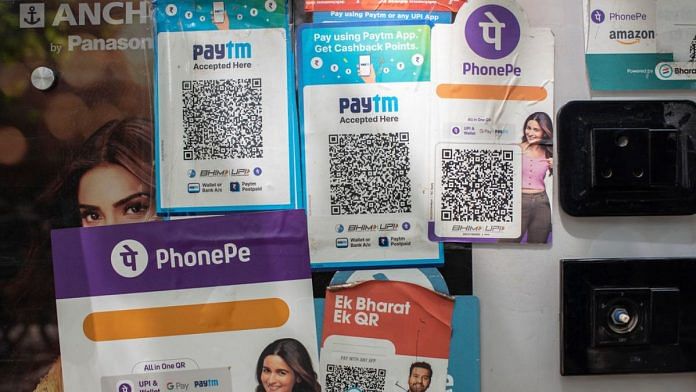Thank you dear subscribers, we are overwhelmed with your response.
Your Turn is a unique section from ThePrint featuring points of view from its subscribers. If you are a subscriber, have a point of view, please send it to us. If not, do subscribe here: https://theprint.in/subscribe/
Inflation, a critical economic phenomenon, is often described as the sustained increase in the general price level of goods and services in an economy over a period. It is measured by indices such as the Consumer Price Index (CPI) or the Wholesale Price Index (WPI). Moderate inflation is a natural feature of a growing economy, but when unchecked, it can lead to instability, especially in developing nations like India. This essay explores the concept of inflation, its merits, and its demerits, focusing on its impact on a developing economy like India.
Inflation in the Indian Context
India’s experience with inflation highlights both its potential and pitfalls. Post-independence, India faced challenges of stagflation during the 1970s, with high inflation and low growth. Liberalization in the 1990s brought new dynamics, with inflation driven by global oil prices, food supply shocks, and fiscal policies.
However, supply chain disruptions, global oil price fluctuations, and domestic policy challenges continue to evaluate inflation management. For instance, the COVID-19 pandemic and the Russia-Ukraine conflict led to supply-side shocks, driving inflation in essential commodities.
Definition of Inflation: Inflation occurs when there is an increase in demand relative to supply or when production costs rise, pushing up prices. Economists often categorize inflation into three types:
- Demand-Pull Inflation: Occurs when the demand for goods and services exceeds their supply.
- Cost-Push Inflation: Arises when production costs, such as wages and raw materials, increase, leading to higher prices.
- Built-In Inflation: Results from the wage-price spiral, where workers demand higher wages to keep up with rising prices, further driving inflation.
Inflation is expressed as an annual percentage and serves as a barometer of economic health. However, its effects vary across economic strata and sectors, making it a double-edged sword.
Merits of Inflation in a developing economy like India
Inflation, when moderate, can play a constructive role in a developing economy like India, which is striving for growth and modernization. Some of the merits include Stimulus to economic growth, Reduction of Debt burden, Encouragement for Investments in Infrastructure, Boost to Employment and Incentivization of innovations.
A moderate level of inflation can encourage spending and investment. When people expect prices to rise, they are more likely to spend and invest rather than save. This increased expenditure can drive economic activity and boost GDP growth, which is vital for a developing country like India. Inflation can reduce the real value of debt. Governments and businesses often benefit as the relative burden of previously borrowed money diminishes over time, assuming income and revenue grow with inflation. This can enable the Indian government to manage its substantial fiscal deficit more effectively. Inflation can lead to higher nominal profits, encouraging businesses to invest in expansion and infrastructure. For India, which is working towards improving its infrastructure to attract global investors, inflation can serve as a catalyst for such investments. By fostering demand, moderate inflation can spur production, leading to job creation.
Negative impacts of inflation in a developing economy like India (Demerits)
While inflation can stimulate growth, excessive or unanticipated inflation poses significant risks, especially for a diverse and populous nation like India. Like Erosion of Purchase Power, Widening of Income Inequality, Impact on Savings. Averse Effect of Trade Competitiveness, Pressure on Monetary Policy and Social Unrest.
Inflation reduces the purchasing power of money, disproportionately affecting low- and middle-income groups who spend a sizeable portion of their income on essentials like food, housing, and healthcare. In a country like India, where income disparity is high, this can lead to a decline in the standard of living for large sections of society. Inflation often benefits asset owners while harming wage earners and savers. As asset prices rise, the wealth gap widens, exacerbating inequality in India, where a huge portion of the population lacks access to financial assets. Inflation discourages savings by eroding the real value of money. For a developing country like India, where domestic savings are crucial for funding investments, this poses a significant challenge. Lower savings can hinder capital formation and long-term economic growth. High inflation can make Indian goods more expensive in global markets, reducing their competitiveness. This is a concern for India’s export-driven sectors, such as textiles, IT, and agriculture, which are crucial for earning foreign exchange. Managing inflation requires vigilant monetary policy. In India, the Reserve Bank of India (RBI) often faces the dilemma of balancing growth with inflation control. Democracy like India, maintaining public confidence in economic management is critical, and inflation undermines this trust.
Conclusion
Inflation is an inevitable aspect of economic development, and its impact depends on its magnitude and management. India, a developing economy with vast potential and challenges, moderate inflation can serve as a growth driver, stimulating investment and employment. However, unchecked or volatile inflation can erode purchasing power, widen inequality, and hamper growth.
The key lies in prudent fiscal and monetary policies that balance growth aspirations with inflation control. Structural reforms, improved supply chains, and investments in infrastructure and technology can help mitigate inflationary pressures while fostering inclusive growth. For India, navigating the tightrope of inflation is not just an economic necessity but a cornerstone of its journey towards becoming a global economic powerhouse.
These pieces are being published as they have been received—they have not been edited/fact-checked by ThePrint.


